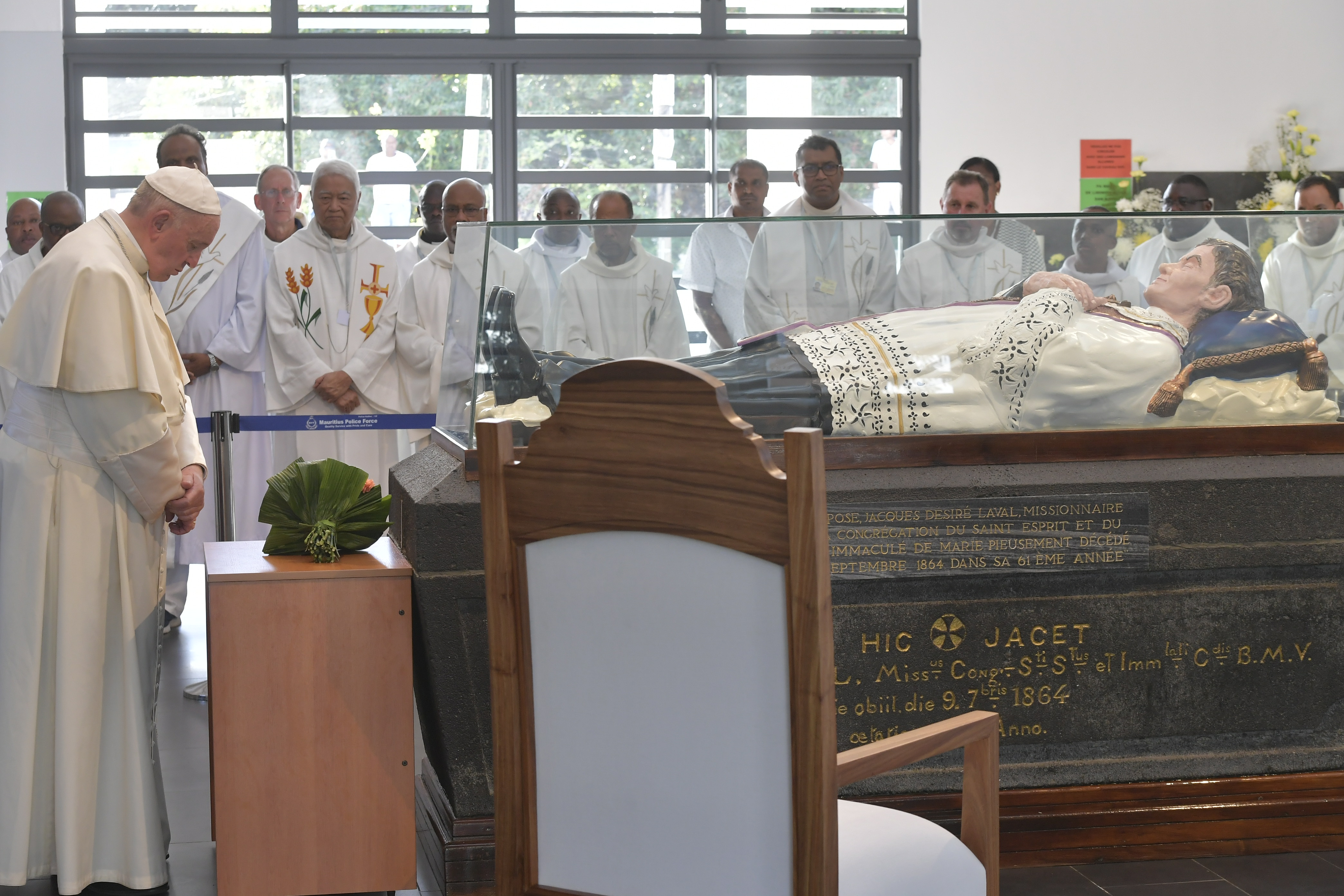Today, September 9th is the feast of Blessed Jacques Désiré Laval, often called the Apostle of Mauritius. And as you might imagine, it was a moment of great joy for people on the island nation that Pope Francis was present on this day and visited the Shrine of Father Laval.
 In the Holy Father’s homily earlier today, Francis stressed that Father Laval, through his missionary outreach and his love, gave to the Mauritian Church a new youth, a new life, that today we are asked to carry forward.
In the Holy Father’s homily earlier today, Francis stressed that Father Laval, through his missionary outreach and his love, gave to the Mauritian Church a new youth, a new life, that today we are asked to carry forward.
Blessed Father Laval, Francis acknowledged, also experienced moments of disappointment and difficulty with the Christian community, “but in the end, the Lord triumphed in his heart. For he had put his trust in the Lord’s power,” Francis noted.
Father Laval was born in France in 1803 and died at 60 in 1864 in Mauritius, where he spent his life serving the poor, sick, and suffering. His feast day is observed by Christians and non-Christians alike in the country.
During his visit, Pope Francis presented a give to the shrine, an icon of «Our Lady of Tenderness».
This delicate and subtle representation of the Virgin Mary with Child is directly inspired by the renowned icon of “Our Lady of Tenderness”, better known in Byzantine Christian culture as “Our Lady of Vladimir”.
 The icon of “Our Lady of Tenderness” underlines that special and natural gentleness that there is between the Mother and Child, with that embrace culminating in the delicate contact between their cheeks. A sign of profound unity and closeness, this brings to mind the words of Psalm 17: “Keep me as the apple of your eye; hide me in the shadow of your wings”.
The icon of “Our Lady of Tenderness” underlines that special and natural gentleness that there is between the Mother and Child, with that embrace culminating in the delicate contact between their cheeks. A sign of profound unity and closeness, this brings to mind the words of Psalm 17: “Keep me as the apple of your eye; hide me in the shadow of your wings”.
Abandoning herself in that embrace, and letting herself be safeguarded in faith, however, Mary does not look at Jesus, because she knows that she is looked at by Him. Instead, she turns her incredibly gentle but at the same time sorrowful gaze towards the believer who contemplates the icon and, through him, to all humanity that has drifted away from God, causing the sufferings of which the world is full. In this way, a profound spiritual dialogue is established between those who contemplate and Jesus and Mary, who bows towards the Son in search of consolation, while the gaze of the Child is entirely focused on that of the Mother as if to express compassion for those who suffer.



